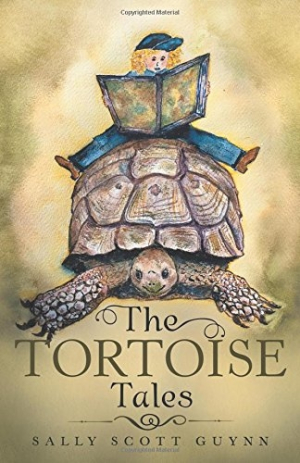The Tortoise Tales
Guynn’s collection would be ideal for cultivating a love and appreciation of nature, wildlife, and conservation in elementary and middle-grade students.
A curious young girl and a wise old tortoise forge an extraordinary friendship while exploring the wonders of nature in The Tortoise Tales, a diverse collection of short stories from educator and wildlife conservationist Sally Scott Guynn that combines folktales and fantasy with history and fun facts.
When young Sally Scott first meets Ezra, a 130-year-old tortoise, she has no idea that her kind heart and love of “wild things in wild places” will enable him to communicate with her. After a surprising first encounter, she gamely climbs atop his mottled carapace and the two meander through the woodlands of Virginia, moving through eight distinct tales with countless fascinating details about a variety of plants and animals.
The tales are labeled one through nine, with the first serving as an overall introduction. Encompassing an entertaining mishmash of genres, they include traditional folktales with talking animals and morals, contemporary stories featuring barnyard and domestic animals, Native American folklore, fantasy tales, and an unexpectedly apt retelling of “The Three Little Pigs” featuring caddisfly larvae.
Most of the stories are set in North America, although coastal, desert, or creekside landscapes vary and “The Funky Monkey” is set in the jungle. The ever-fluctuating times and places are colorful and often require a leading explanation from Ezra, with mixed results. Tale three, for example, takes place a “long, long ago, before such modern times as now,” but Beaulion, the main character, is a young boy shown wearing shorts and a t-shirt who encourages a dragon to “go ahead and let her rip, dude!”
Ezra is the overarching storyteller; he has a relaxing, conversational tone and varies between being silly, serious, and somewhere in between. Southern colloquialisms, like “couldn’t hear worth beans,” peek through. Each tale incorporates a different animal or human perspective and has its own set of narrators as well.
Somat the jaguar and Queenie the magpie are joined by a great horned owl, a bald eagle, monkeys, blackbirds, and goats. Realistic black-and-white illustrations are interspersed throughout. Detailed sketches by the author feature core and supporting animal characters in strikingly lifelike portraits and action poses.
Although Ezra often mentions to Sally that his memories are “quite true” or “mostly true,” there are many pieces of historical trivia and natural science data woven seamlessly into the largely fictional accounts. In addition, a “Juicy Animal Facts” section follows each of the numbered stories and contains definitions and explanations in a similarly casual, informal manner, as if Ezra were providing those as well.
“Noodle Joggers,” compiled at the end, offer between three and six discussion questions per story as well as possible answers that encourage further study to forge a more in-depth understanding of specific species and topics.
Ideal for cultivating a love and appreciation of nature, wildlife, and conservation in elementary and middle-grade students, Sally Scott Guynn’s The Tortoise Tales combines folktales and modern plots in a unique compilation of lively stories full of humor and a wealth of wildlife knowledge.
Reviewed by
Pallas Gates McCorquodale
Disclosure: This article is not an endorsement, but a review. The publisher of this book provided free copies of the book and paid a small fee to have their book reviewed by a professional reviewer. Foreword Reviews and Clarion Reviews make no guarantee that the publisher will receive a positive review. Foreword Magazine, Inc. is disclosing this in accordance with the Federal Trade Commission’s 16 CFR, Part 255.

